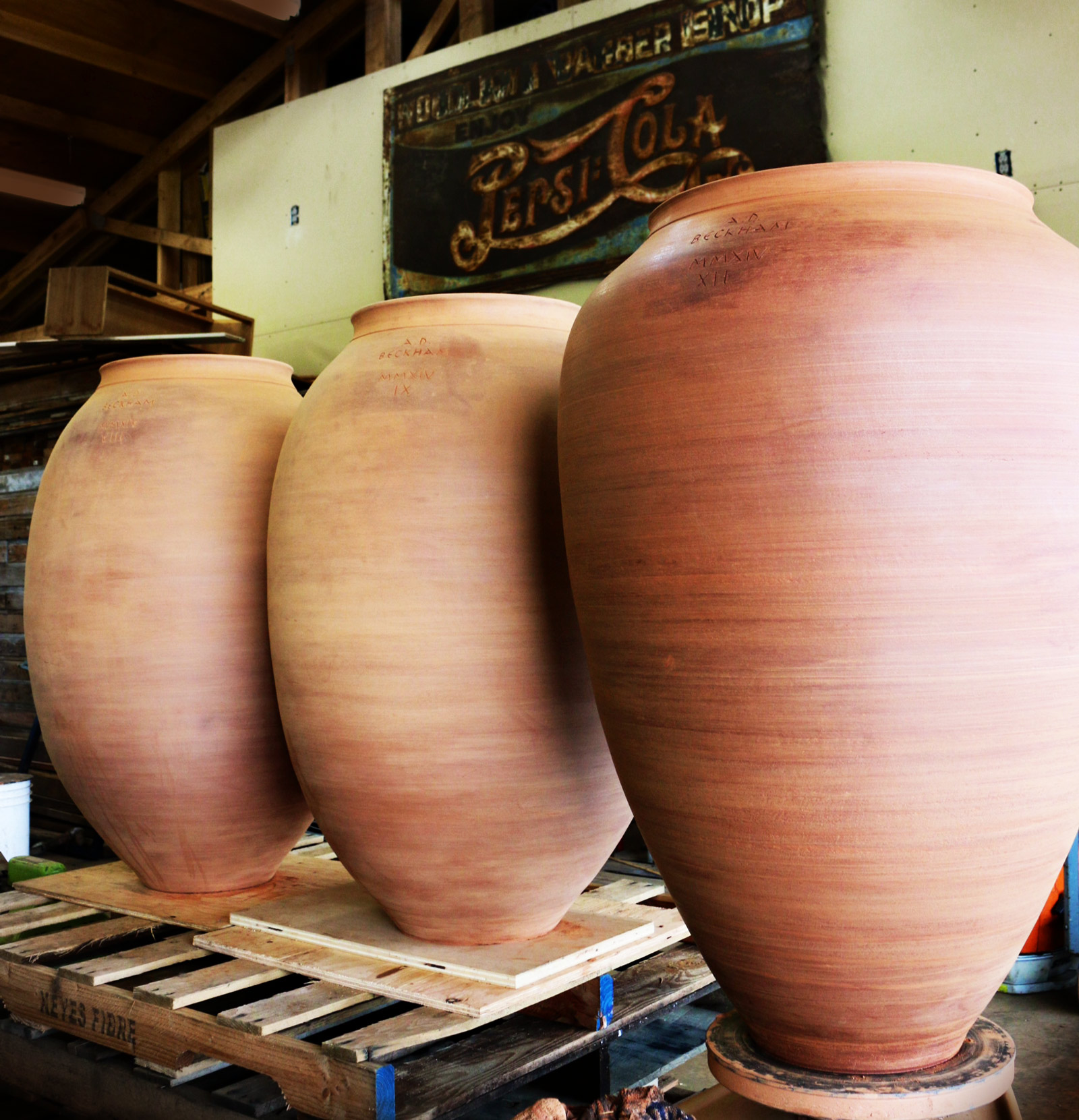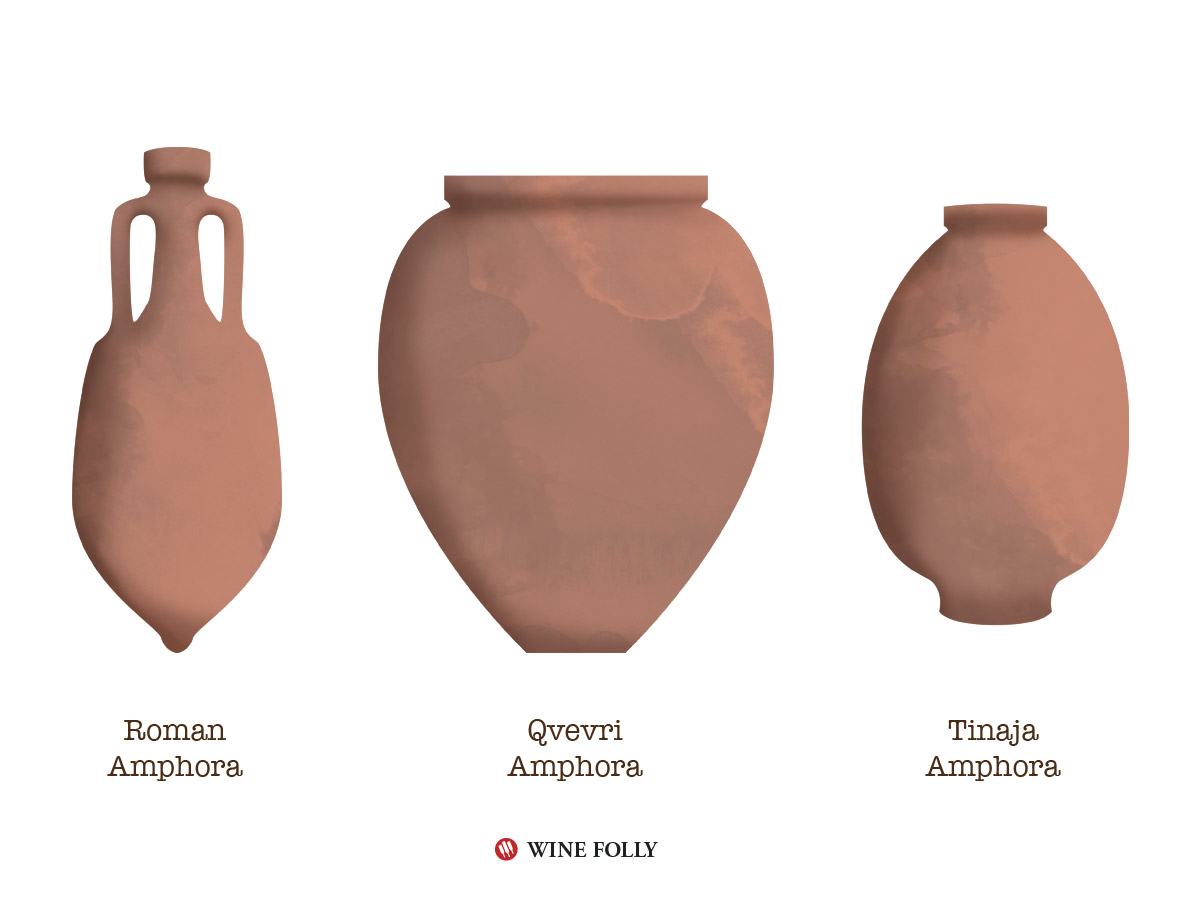Learn about a winemaker in Oregon who is using the ancient technique of amphorae to make wine.
Ever wonder what ancient wines actually tasted like? Scientists have put together many details of how ancient wines were made from studying the ruins of 6000 year-old cellars. A key component of these cellars is the use of earthenware pots called amphora to make wine. Surprisingly enough, there is a producer reinvigorating the process of using amphora in winemaking in a rural suburb of Portland, Oregon.
Ancient Amphora Winemaking is Alive in Oregon

Amphorae, like these Georgian style Qvevri, have been used for a millennia to make wine. A winemaker with a background in pottery is reviving this ancient tradition. photo by Beckham Estate Vineyard
Andrew Beckham is not your usual deep-pocketed winery owner, in fact, he’s actually a high school pottery teacher. In the early 2000’s Andrew and his wife, Annedria, chose to move out of the city to acquire enough space to build a pottery studio. It was here, that the couple developed a keen interest in wine, planted a few rows of Chardonnay and Pinot Noir, and started Beckham Estate Vineyard. Andrew had never thought to tie his love for pottery with wine until he came across an article about Elisabetta Foradori, a famous Italian winemaker who started to use amphorae to make wine.
“I saw the amphora and thought, I could make that” –Andrew Beckham
Over several years, Beckham worked on developing the right amphora shape which involved researching ancient designs including Roman amphora, Spanish Tinaja (terra-cotta storage vessels) and Georgian Qvevri. This is where Beckham has stumbled across some fascinating secrets from the past. For example, his skin-contact Pinot Gris was made in a Roman-styled amphora, which is narrow and pointy. The design of the amphora lets the seeds drop to the bottom and reduces the bitter tannins from the seeds. The result is an intensely colored Pinot Gris, which perhaps mimics the so-called “golden wines” of the Roman empire.
Aging wines in earthenware also showed surprising results. The porosity of the clay increases the oxygen exposure to wines while they age. Oxygen accelerates the tertiary flavor development which includes softening tannins and increasing aromas of nuts, baked fruit, and chocolate. After experimenting with Pinot Noir aged in oak vs amphora, Beckham suggested that the increased levels of dissolved oxygen in the amphora wines meant they are ready in about half the time of the wines aged in oak.
How do Amphora Wines Taste?
After tasting through Beckham’s wines (which are also naturally produced) we’ve come to realize that Amphorae do show fantastic potential (especially for those of us who yearn for purity of fruit and subtlety).
- A.D. Beckham Lignum (“wood”) Pinot Noir
A wine fermented in amphora, but aged in wood. This was one of my favorite of the bunch with loads of tart cranberry, forest berry, true cinnamon, anise, tart cherry and tilled soil flavors. Texturally speaking, the wine has high acidity with a long tingly aftertaste that exudes flavors of fresh cherries. I found it to be somewhat unlike other popular Oregon Pinot Noir wines with a lighter body and much more minerality. - A.D. Beckham Creta (“clay”)
A wine fermented in amphora and aged in amphora. This wine was the most different of the bunch. It was a hazy ruby color with aromas of plum, dusty raspberry, milk chocolate, cinnamon, cherry, dill, mashed banana and wet paint. The smell was disarming and for an aroma geek, entirely intriguing. Upon tasting the wine, it had slightly more subdued acidity and rich mineral flavors of freshly wetted concrete. The chocolate overtones in the wine managed to smooth out the contrasting aromas and make the wine quite easy to drink. - A.D. Beckham Malbec
A wine fermented in amphora and aged in a combination of amphora and wood. This wine was reductive. When the reduction aromas (reduction has heavy almost sulfur-like aromas) went away, the Malbec burst with flavors of plum, blackberry and chocolate with a medium body (much lighter than most Malbecs), medium plus acidity, and this rustic texture of concrete. I was immediately reminded of highly appreciated Zuccardi “Concreto”, a wine made in concrete eggs. This wine showed potential for amphora as a viable fermentation vessel in modern wines.



